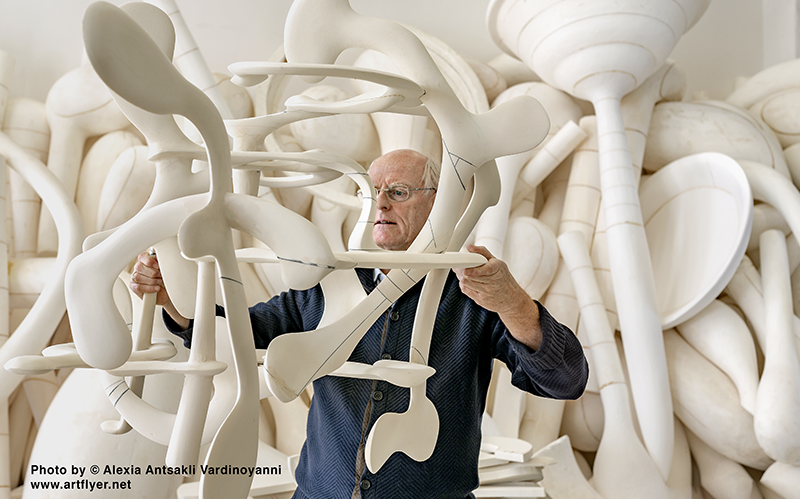
Between ‘faith’ and science: a passionate appeal for the art of sculpture. To mark the exhibition, at Houghton Hall, sponsored by Dorotheum, Tony Cragg spoke to Dorotheum myART MAGAZINE about inner structures, levels of perception and the truly magical moments.
Dorotheum myART MAGAZINE: You have placed and staged your sculptures in Houghton Hall, the Boboli Gardens in Florence and the Yorkshire Sculpture Park. What is your approach to historical buildings and gardens as an artist’s canvas?
Tony Cragg: First of all, the sculptures have to be able to stand outside – that already determines the choice of materials. They also have to be of a certain size – and if they are to be arranged as a group, they should form a meaningful context, revolving around a uniting theme.
What might such themes be?
Our relationship with nature. In general, anything that people create is somehow related to the natural environment. Nature has produced wonderfully intricate shapes and structures for millions of years … it’s a diversity that fascinates me. We, on the other hand, produce rather simple, repetitive, easy-to-reproduce forms based on simple geometry.
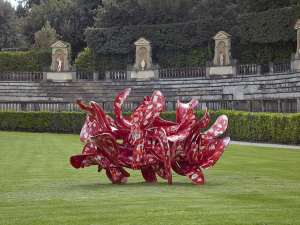
Was this what you were referring to with “Industrial Nature”, the title of one of your sculptures?
Exactly. The forms start from a central, supporting structure and unfold in different ways – like vegetation.
Why did you pick sculpture as your career choice
and not biology?
Sculpture is an extremely important discipline because it is one of the few areas in which people create new forms. We can produce rationalised, industrialised forms quite well, but sculpture goes in the other direction: It aims to create something that is not necessarily useful, but reveals to us how many other possibilities the form holds.
Computer programs also create new forms. Many of your works have an uncanny digital aesthetic – you can hardly tell the difference. They seem visionary.
As far as my early works, the “Early Forms” or “Points of View”, are concerned, I have often been asked what computer program I used to create them. At the time, however, such computer programs didn’t exist. The reason for this assumption is that my sculptures have an inner structure that ranges from a simple elliptical structure to complicated forms. I repeat these over and over, and the result is a complexity that strains our perception.
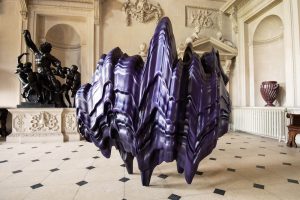
You generate a huge spectrum of forms. Some objects appear stacked, distorted or knotted, some are perforated or unfolded. You also utilise a great variety of materials. Where do you start when you begin working on a new sculpture?
With pencil drawings. The works develop as an organic process, both formally and in terms of content. The process consists of a progressing chain of decisions, some of which are quite important. I sense that had I proceeded differently, the result would have been a completely different form. If you work this way for an extended period of time – I’ve been doing it for 50 years – the sculptures simply take on a life of their own. It is always exciting and surprising for me to create something new, formally but also in terms of its meaning.
Can you mention any other themes you work with?
That which can be seen and that which cannot be seen. The visible, the invisible. By that I mean that we have a certain perception. Our perception is conditioned by the culture in which we exist. Conditioning – a very important issue – is not only found in politics, but everywhere in society. Perception generates certain expectations, a belief, etc. Being confronted with new forms can shed new light on how you perceive things. Sculpture and art are in their essence a means of making inner structures visible to the eye.
Are these phenomena also traceable in your relationship with nature?
Not necessarily. Ecology, for example, is important for the real world – for improvement of the world. Other than that, I don’t consider it very exciting. Working on our perception, however, that is possibly a very important thing.
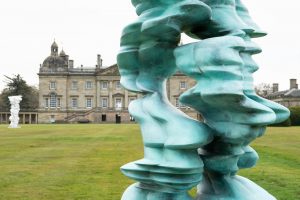
Photo: Jeff Spicer/PA Wire
In the sense of charging a place up, of providing it with a new intrinsic value? Sometimes your works appear to be visualisations of physical forces that we didn’t yet know existed, as, for example, gravitational waves which were discovered by scientists only recently. After all, many artists have demonstrated physical phenomena in their work long before they were realised or documented by scientists. One example of this could be the computer
pixel aesthetics.
Certainly.
Perhaps you are expressing today what people will understand instinctively in 100 years time?
That’s a bit too mystical for me (laughs). Science strongly dictates our everyday life: The forms that surround us, our health and so forth. But science is worthless unless someone demonstrates its value to us. Even hundreds of years ago, some research had been done about the nature of reality, but people themselves still have not changed much since then … unfortunately!
If growing knowledge isn’t what moves humankind
forward, what does?
Only art shows us what something is truly worth, what it means to us. At best, art also makes some sense. That is another important theme in sculpture.
In what way?
We know a lot, but very little compared to what there is to know. And every time we don’t know or comprehend something, we fill in the blanks with belief. That is a major problem of our time. Faith – and I don’t mean religion in particular – is still a stronger force than science. You can see this clearly demonstrated in politics and formalised religions.
Corona is currently demonstrating this par excellence…
And that is the fabulous thing about sculpture; it shows how incredibly valuable my sensitivity, my “faith” if you will, really is. Everything I see is merely a fraction of reality. It’s amazing that we, blinded by our perception, can’t even begin to acknowledge what is truly going on.
And we take ourselves so seriously …
We have reflective intelligence. We are torn between two extreme self-perceptions. According to one we are extremely important, the other renders us utterly insignificant. You have to find your rooting in the middle ground between the two in order to stay sane.
What does material mean to you?
150 years ago, very few materials were used for sculpture – the classical options such as stone, marble, bronze or wood. Today, everything is potentially work material. That’s a major change. Sculpture is no longer an expression of mimicry. It has also become a study of material. Our DNA, the atmosphere, climate, human psychology; they have all been integrated as materials in the art of sculpture. In this sense I am a materialist – intelligence and emotions too are work materials.
How is this expressed in your work process?
I usually start with the material. The choice of work material dictates what can be made from it. I am sometimes surprised at the variety of emotions and meanings that different materials can inject in one and the same form. You can compare it to playing the same piece of music on two different instruments.
What are you currently working on?
I’ve been working a lot with glass recently, also for the exhibition at Houghton Hall. Glass is a liquid, its surface takes on forms of its own – droplets, spheres, strands. It shapes itself between your hands – that’s always a magical moment when working with glass. It is similar to drawing with a pencil. Graphite, when applied to paper, sometimes determines the outcome more than one would like to admit.
The interview was conducted by Dorotheum’s Senior Press Officer Doris Krumpl.
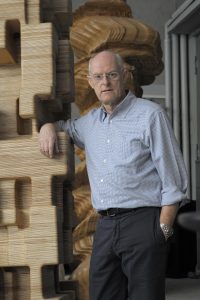
Tony Cragg,
formally Sir Anthony Douglas Cragg, is considered to be one of the world’s most prominent and significant contemporary sculptors. Cragg was born in Liverpool, England in 1949 and studied art at Royal College of Art in London. In 1977, Cragg moved to Wuppertal in Germany, where he has been based ever since. Cragg had already had several solo exhibitions by the time he moved to Germany. His early work consisted mainly of colourful “assemblages” created from found objects and discarded materials. Cragg created a firm footprint in the art world with his unique biomorphic-abstract sculptures, drawing on Land Art, Arte Povera and Minimal Art as his inspirational backdrop. He was selected to exhibit at documenta in 1982 and 1987, and at the Venice Biennale in 1986, 1988 and again in 1997. In 1988, he also took up a position as professor at the Dusseldorf Art Academy and was awarded the prestigious Turner Prize. From 2001, Cragg served as a professor at the Berlin University of the Arts, before returning, in 2006, to the Dusseldorf Academy of Art, where he was a professor until 2014, also serving as Rector from 2009 to 2013. The interplay between nature and sculpture in Cragg’s work is nothing short of legendary. The resulting synergies have been most effectively realised in Waldfrieden, a publicly accessible sculpture park near Wuppertal, which Cragg acquired and began transforming in 2006. His 2019 exhibition in the Boboli Gardens in Florence is another powerful example of his trademark dialogue between art and nature, as is the 2021 exhibition, sponsored by Dorotheum, at Houghton Hall and Gardens in Norfolk, UK.













